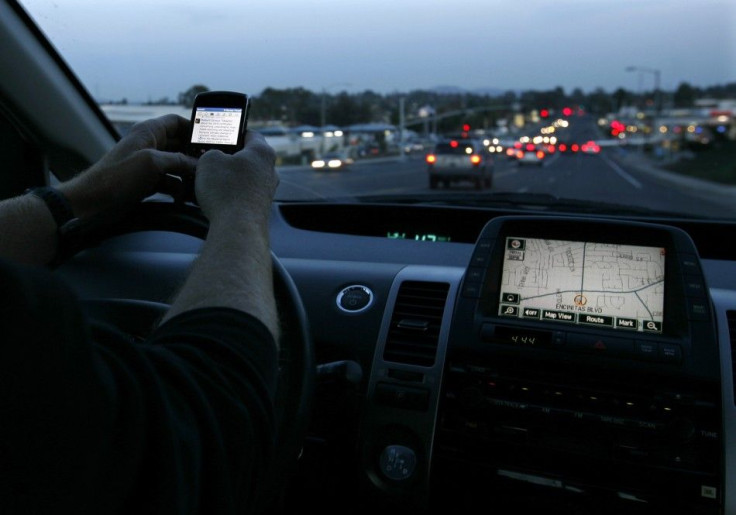Legislators Looking To Limit GPS App Developers In Hopes Of Making Roads Safer

Getting driving directions is right at our fingertips thanks to mobile mapping programs like Google Maps and Waze, but that increasingly common behind-the-wheel practice is about to get a little more difficult if the National Highway Traffic Safety Administration gets its way.
In a proposed transportation bill called the GROW AMERICA Act, put forth recently by President Obama and Secretary of Transportation Anthony Foxx, the NHTSA will have the power to set restrictions on mobile apps and force application developers to make changes if the administration feels the app endangers road safety, reported the New York Times Monday.
“The measure has the support of automakers, which already mostly comply with voluntary guidelines for built-in navigation systems, but it has run into stiff opposition from technology companies, which say that any such law would be impractical and impossible to enforce,” the NYT writes.
Several states already have similar laws aimed at preventing distracted driving. For example, a California law prevents drivers from texting or talking on the phone while driving. But an appeals court ruled in February that the law does not prohibit the use of mapping or GPS apps. This decision overturned a 2013 court decision that hinged on the correct interpretation of the word “using.”
“The term ‘using’ is nowhere defined in the statute,” a Fresno, California, court document from 2013 reads, “but if the Legislature had intended to limit the application of the statute to ‘conversing’ or ‘listening and talking,’ as appellant maintains, it could have done so.”
California Highway Patrol Officer Mike Harris told International Business Times that while the law that prohibits texting and talking on your cellphone may not apply to GPS navigation and mapping applications, distracted driving is covered under a separate vehicle code, VC 22350, otherwise known as the Basic Speed Law, which states, “No person shall drive a vehicle upon a highway at a speed greater than is reasonable” for the conditions of the road.
“It’s obviously a fact that distracted driving is dangerous,” Officer Harris told IBTimes. “We are going to do everything we can do to enforce the law.”
According to the NHTSA, even a small task “(such as reaching for a phone, dialing and texting) associated with the use of hand-held phones and other portable devices increased the risk of getting into a crash by three times.”
Those increased risks turn into actual crashes. A report by the U.S. Department of Transportation published in 2013 stated that “10 percent of fatal crashes in 2011 were reported as distraction-affected crashes.” Of the fatalities, “385 [people] died in crashes in which at least one of the drivers was using a cell phone (12 percent of fatalities in distraction-affected crashes) at the time of the crash.”
However, according to a 2013 study published in the American Economic Journal: Applied Economics, the efficacy of distracted driving laws is proportional to how strictly they are enforced.
“Bans appear moderately successful at reducing single-vehicle, single-occupant accidents if bans are universally applied and enforced as a primary offense,” states the study. “Bans enforced as secondary offenses, however, have at best no effect on accidents.”
A primary offense means drivers caught in the act of talking or texting on their phone can be pulled over and fined, while a secondary offense means that act of talking or texting can only be added to more serious violations, like speeding.
The report goes on to state that such bans tend to reduce distracted-driving-related accidents for only a few months, then the accident rate goes back to what it was before legislation.
A study of the relationship between texting laws and insurance claim frequency conducted by the Transportation Research Board in 2010 actually found that accidents related to distracted driving increased post-legislation.
“Insurance collision loss experience does not indicate a decline in crash risk when texting laws are enacted. Rather, there appears to have been a small increase in claims in the states enacting texting bans, compared to neighboring states,” stated the report.
While legislators are actively looking for solutions to the epidemic of distracted drivers, the private sector is also working on this problem. The Louisiana-based company CellControl in January introduced DriveID, a system that renders a driver’s cellphone useless except for emergency calls while the car is in motion.
The process is simple. “If the individual passes the device to the driver, then the policy is enforced, disabling the driver from being able to text, email or use the Internet,” said Rob Guba, CEO of Cellcontrol.
While many parents are interested in the DriveID system, David Coleman of CellControl told IBTimes that fleet operators have also jumped on the opportunity to reduce commercial drivers' cellphone use.
“We’re seeing nice success on the consumer front...[and] we are also seeing quite a bit of interest from the fleet side as well.”
Ultimately, legislators, highway patrolmen and private sector developers are all interested in one thing, public safety. Reducing the number of distracted drivers is an obvious desire, but not an easy task. Officer Harris sums it up simply; “There’s nothing about it that is easy, that’s for sure.”
© Copyright IBTimes 2024. All rights reserved.





















